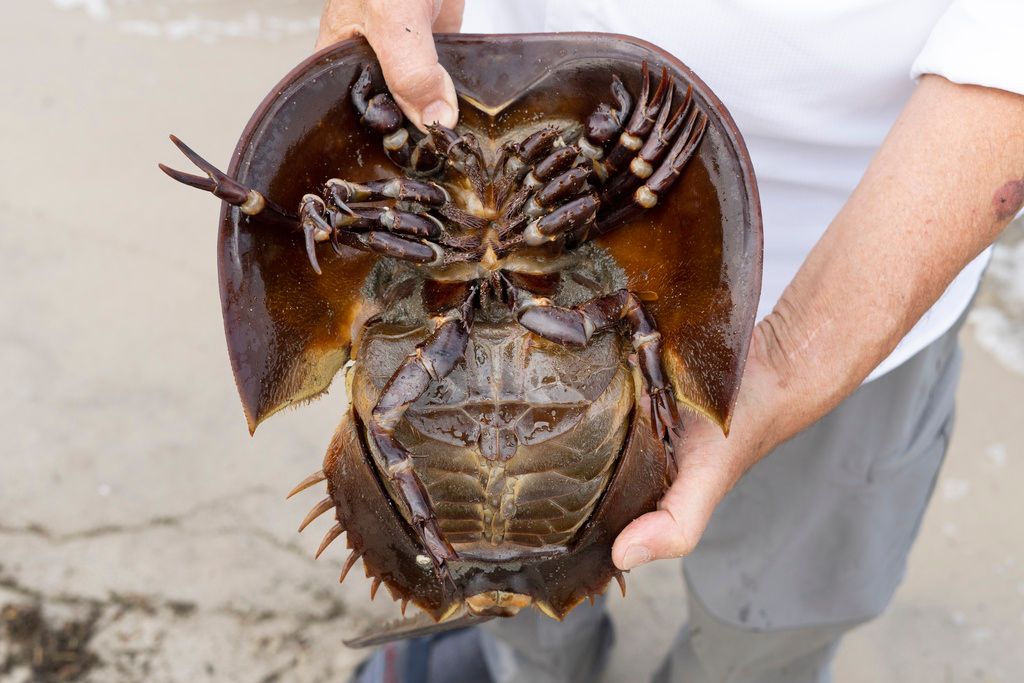About Horseshoe Crab
About Horseshoe Crab
हॉर्सशू क्रैब (Horseshoe crab) वह समुद्री जंतु हैं जो पृथ्वी पर सबसे प्राचीन जीवों में से एक हैं।
ये कुछ महत्वपूर्ण बिंदुओं पर ध्यान देते हैं:
वर्गीकरण: इनके नाम के बावजूद, हॉर्सशू क्रैब वास्तव में सच्चे केकड़ों में नहीं हैं; वे एक अलग उपश्रेणी की जाति हैं जिसे चेलीसेराटा कहा जाता है, जिसमें मकड़ी और बिच्छू जैसे जंतु शामिल हैं।
रूपरेखा: हॉर्सशू क्रैब के शरीर को एक कठिन खोकला ढंकता है, जो तीन हिस्सों में विभाजित होता है: प्रोसोमा (सिर), ओपिस्थोसोमा (पेट) और टेल्सन (पूंछ)। इनके लंबे, कांतेदार पूंछ और कई जोड़ों के पैर उनके चलने के लिए होते हैं।
निवास: हॉर्सशू क्रैब मुख्य रूप से उत्तरी अमेरिका की एटलांटिक तट पर और दक्षिण पूर्वी एशिया के कुछ हिस्सों में मिटटी या कीचड़ी भूमि में पाए जाते हैं।
आहार की आदतें: हॉर्सशू क्रैब प्रमुख रूप से आवश्यक चींटियों, कीड़ों और केकड़ों जैसे छोटे समुद्री जीवों को खाते हैं।
प्रजनन: हॉर्सशू क्रैब को उनकी अनूठी संभोग व्यवहार के लिए जाना जाता है, जो आमतौर पर बहार और गर्मियों के महीनों में होता है।
रक्त: हॉर्सशू क्रैब का एक विशेष नीला रक्त होता है जिसमें कॉपर-आधारित हेमोसायनिन होता है, जिसका उपयोग बैक्टीरियल एंडोटोक्सिन का पता लगाने में किया जाता है।
संरक्षण: हॉर्सशू क्रैबों को आबादी की कमी, बैट और बायोमेडिकल उद्देश्यों के लिए अधिक भारी मात्रा में उत्पादन करने और प्रदूषण से खतरा है।
पारिस्थितिकीय महत्व: हॉर्सशू क्रैब समुद्री पारिस्थितिकी में महत्वपूर्ण भूमिका निभाते हैं। उनके अंडे उड़ने वाले पक्षियों के लिए एक महत्वपूर्ण भोजन का स्रोत प्रदान करते हैं, और उनकी खोदाई गतिविधियाँ उत्तेजना करती हैं और कीचड़ी को उल्ट देती हैं, पारिस्थितिकी तंतु में मदद करती हैं।
Horseshoe crabs are marine arthropods that have been around for hundreds of millions of years, making them one of the oldest living species on Earth. Here are some key points about horseshoe crabs:
Taxonomy: Despite their name, horseshoe crabs are not true crabs; they belong to a separate subphylum called Chelicerata, which also includes arachnids like spiders and scorpions.
Appearance: Horseshoe crabs have a hard shell covering their body, which is divided into three parts: the prosoma (head), opisthosoma (abdomen), and telson (tail). They have long, spiny tails and several pairs of legs for locomotion.
Habitat: Horseshoe crabs are mainly found in shallow coastal waters along the Atlantic coast of North America and in parts of Southeast Asia. They prefer sandy or muddy bottoms where they can bury themselves partially.
Feeding Habits: Horseshoe crabs are primarily scavengers and feed on small marine animals like mollusks, worms, and crustaceans. They use their specialized mouthparts to crush and grind their food.
Breeding: Horseshoe crabs are known for their unique mating behavior, which usually occurs during the spring and summer months. Female horseshoe crabs come ashore to lay their eggs in sandy beaches, and males follow, attaching themselves to the females' shells and fertilizing the eggs externally.
Blood: Horseshoe crabs have a unique blue blood that contains copper-based hemocyanin, which is used to detect bacterial endotoxins. This blood is valuable in the biomedical industry for testing the safety of medical equipment and drugs.
Conservation: Horseshoe crabs face threats from habitat loss, overharvesting for bait and biomedical purposes, and pollution. Efforts are underway to conserve horseshoe crab populations and their habitats.
Ecological Importance: Horseshoe crabs play a crucial role in the marine ecosystem. Their eggs provide an important food source for shorebirds during migration, and their burrowing activities help aerate and turn over sediments, contributing to ecosystem health.
Overall, horseshoe crabs are fascinating creatures with unique characteristics and ecological significance.

.jpg)





No comments: